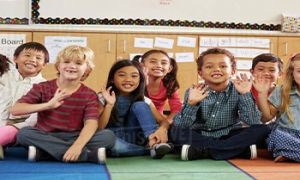Documenting for Out of School Hours (OOSH) services can be quite a task, but it's essential for ensuring quality care and learning experiences for children. The following article provides information on Documenting The Program For OOSh Services, Changes To The Documenting Requirements, Considerations In Developing Documentation, Appropriate and Relevant Documentation, Involving Children In Documentation and more.
Documenting The Program For OOSH Services
Educators enact and extend play and leisure activities that are both active and passive, structured and spontaneous, including mealtimes, personal care routines, and indoor and outdoor environments. The program includes all the spontaneous and planned experiences for children at the service designed to support their wellbeing and facilitate learning. It includes all the interactions, experiences, routines and events.
Services should ensure the program:
- is based on the approved learning framework and delivered in accordance with the framework
- is based on the developmental needs, interests, and experiences of each child
- is designed to consider individual differences of each child
- contributes to the five learning outcomes for each child.
The above information is in accordance with National Regulation 74 and therefore applies to all services that are in scope of the National Quality Framework (NQF). Services located in SA, Tas, Vic, WA, NT, NSW and Qld are not required to keep documentation of individual evaluations of school age children. They will, however, need to document the educational program.
Changes To The Documentation Requirements In SA, TAS, VIC amd WA
Services that educate and care for school age children in SA, Tas and Vic will start to follow the same documentation requirements as services in the Northern Territory (NT), New South Wales (NSW) and Queensland (Qld).
To meet these requirements, the approved provider must ensure that evidence about the development of the educational program for a child over preschool age is documented. Services are required to understand each child and their strengths, ideas, abilities and interests and their progress across the learning outcomes as part of the planning cycle. This can be reflected in documenting how and why the educational program has been developed to support all children to participate in the program.
Services in all states and territories with a mix of school age children and children preschool age or under are required to document individual child assessments for the children preschool age or under and align these to the relevant approved learning framework. In preparing the documentation, services must consider the period of time that the child is being educated and cared for by the service (regulation 74).
No Changes To The Documentation Requirements For The ACT
There is no change to the current documentation requirements for school age services in the ACT. This will ensure that the program reflects the individual needs of the specific community of children attending the service, proportionate to each individual child’s needs and attendance rate as per the national approved learning framework, My Time, Our Place: Framework for School Age Care in Australia (MTOP V2.0 2022).
Therefore, evaluations of each child’s wellbeing, development and learning continue to be required for school age children educated and cared for by services in the ACT. The evaluation should be proportionate to the amount of time the child attends the service and the complexity of their individual needs. Children with a disability or behavioural challenges will need greater support and consideration. This is in accordance with established regulatory practice in the ACT.
What Should Be Considered In Developing Documentation
There is no prescribed method in the National Law or Regulations for documenting the educational program, assessments or evaluations. There are many different electronic, visual and paper based ways to document. A service can explore a range of styles and methods to determine what works best for their children, families and educators.
In preparing documentation, it is important to consider:
- the period of time a child is being educated and cared for by the service
- how the documentation will be used by educators at the service
- how the learning outcomes outlined in the approved learning framework are reflected
- whether the documentation is understood and available to educators and families.
How Much To Document
Educators and service leaders can make the decisions about how much to document, based on their unique context, the age of children attending, attendance patterns and how the documentation will be used by educators and with families.
A key consideration is the amount of time that the child is being educated and cared for by the service. For example, children attending the service frequently are likely to have more information collected and documented over the course of the year than those attending infrequently. However, this will depend on the individual needs of the child.
Educators and service leaders are encouraged to focus on the quality of the documentation and how it is used to enhance wellbeing, learning and development outcomes for children rather than the quantity of documentation collected
for individual children.
Documentation occurs at every stage of the planning cycle and making it visible encourages the revisiting of ideas and concepts. Providing children and young people with opportunities to participate in documentation and assessment of wellbeing, learning and development supports children to become effective communicators.
Types Of Formats Of Documentation
There are many ways to document evaluations of children and young people’s learning – electronic, audio, visual, digital and paper-based.. Each format must demonstrate analysis of their learning to meet the requirements of the National Regulations. Quality documentation focuses on an aspect of learning, not just ‘what we did’. Some examples which an authorised officer may sight include enrolment information, details on children and young people’s strengths, ideas, abilities and interests along with ongoing evidence of their engagement and participation in the program. Other examples may include:
- Learning stories or narratives of key events that demonstrate:
educators understand the children and young people and their own practice, have identified outcomes, and suggested ways to build on children’s learning and development
children and young people have described the experience and why it was important to them. - Photographs with captions, photographic sequences or video clips that demonstrate:
children and young people showing themselves as active participants and decision-makers
the experiences children and young people are engaged in, their skills, development and progress. - Observations or reviews that demonstrate:
educators evaluating events and activities for extension
children and young people’s feedback has contributed to a decision to continue or extend on an aspect of the program. - Journals that demonstrate:
educators reflecting on their own practice and interpreting the feelings, thoughts and ideas of children, families, and colleagues. - Examples of children and young people’s work, contributions and learning
this could include work sample’s such as drawings, reflections or photographs that children have created, as well as children and young people’s thoughts and ideas about the program and their learnings.
Appropriate and Relevant Documentation
In determining if a service is maintaining appropriate and relevant documentation, the authorised officer may discuss
with your service how educators:
- articulate how each child is reflected within programmed experiences
- obtain and document children’s ideas, interests and challenges
- gather information about common trends and how this is included in the program
- collect information regarding all children
- support children to document their ideas, abilities and challenges
- ensure that age-appropriate experiences and resources are provided to children
- make decisions about the educational program
- make decisions about the type and format of documentation
- ensure documentation is readily available and understood by families
- involve children in documenting their own wellbeing, development and learning progress
- are responsive to children’s strengths, ideas, abilities and interests in developing the program.
They may also observe practices, interactions and relationships that demonstrate:
- mind maps and surveys being completed by children and educators
- children sharing their ideas with peers and educators using this information to incorporate into the program
- children and young people conducting surveys to influence changes in the program and routine
- children and young people planning, conducting, and sharing meetings with their peers to influence the program
- children and young people recording their own program ideas and risk assessments and these ideas being reflected in planned experiences
- educators, children, and young people reflecting together on what aspects of the program work and what areas can be improved
- conversations between children, young people, and educators about aspects of practice and ideas being implemented
- educators working with children and young people to reflect on their own learning and experiences.
They may sight documentation:
- about children and young people’s participation in the program that is collected by the child and by educators in a format that is interesting for the children, young people and their families
- showing the evaluation of children and young people’s wellbeing, learning and development, including how they feel and what they know, can do and understand, and further goals established with input from children and young people
- about programs that include planned experiences and/or strategies to support program goals
- showing examples of children and young people having opportunities to contribute to program planning and evaluation.
Involving Children In Documentation
School age care services should have processes to enable children and young people to influence the program in response to their own strengths, ideas, abilities, and interests, and be able to show how this occurs. The service should also demonstrate an effective process to ensure each child’s participation and engagement in the program. This may be demonstrated by educators engaging in critical conversations with children and young people and documenting the actions taken resulting from these conversations. Ensuring each child is included in the program doesn’t necessarily mean a large volume of written documentation.
The focus is on ensuring the service is inclusive of all children and young people. For example, the service may have noted that many children and young people are interested in a project, and this is reflected in the program. The program should also reflect how the wellbeing, learning and development of a child that is not interested in the project has been planned for. When educators support each child’s interests, learning and developmental needs, they can effectively communicate their understandings of the child and include them within the educational program.
Reference:
Guide To The Natinal Quality Framework, ACECQA
My Time, Our Place Framework, ACECQA







 Here is the list of the EYLF Learning Outcomes that you can use as a guide or reference for your documentation and planning. The EYLF
Here is the list of the EYLF Learning Outcomes that you can use as a guide or reference for your documentation and planning. The EYLF The EYLF is a guide which consists of Principles, Practices and 5 main Learning Outcomes along with each of their sub outcomes, based on identity,
The EYLF is a guide which consists of Principles, Practices and 5 main Learning Outcomes along with each of their sub outcomes, based on identity, This is a guide on How to Write a Learning Story. It provides information on What Is A Learning Story, Writing A Learning Story, Sample
This is a guide on How to Write a Learning Story. It provides information on What Is A Learning Story, Writing A Learning Story, Sample One of the most important types of documentation methods that educators needs to be familiar with are “observations”. Observations are crucial for all early childhood
One of the most important types of documentation methods that educators needs to be familiar with are “observations”. Observations are crucial for all early childhood To support children achieve learning outcomes from the EYLF Framework, the following list gives educators examples of how to promote children's learning in each individual
To support children achieve learning outcomes from the EYLF Framework, the following list gives educators examples of how to promote children's learning in each individual Reflective practice is learning from everyday situations and issues and concerns that arise which form part of our daily routine while working in an early
Reflective practice is learning from everyday situations and issues and concerns that arise which form part of our daily routine while working in an early Within Australia, Programming and Planning is reflected and supported by the Early Years Learning Framework. Educators within early childhood settings, use the EYLF to guide
Within Australia, Programming and Planning is reflected and supported by the Early Years Learning Framework. Educators within early childhood settings, use the EYLF to guide When observing children, it's important that we use a range of different observation methods from running records, learning stories to photographs and work samples. Using
When observing children, it's important that we use a range of different observation methods from running records, learning stories to photographs and work samples. Using This is a guide for educators on what to observe under each sub learning outcome from the EYLF Framework, when a child is engaged in
This is a guide for educators on what to observe under each sub learning outcome from the EYLF Framework, when a child is engaged in The Early Years Learning Framework describes the curriculum as “all the interactions, experiences, activities, routines and events, planned and unplanned, that occur in an environment
The Early Years Learning Framework describes the curriculum as “all the interactions, experiences, activities, routines and events, planned and unplanned, that occur in an environment


